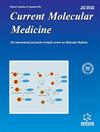了解非编码 RNA 和外泌体非编码 RNA 在糖尿病肾病中的作用
IF 2.2
4区 医学
Q3 MEDICINE, RESEARCH & EXPERIMENTAL
引用次数: 0
摘要
:糖尿病最严重的副作用之一是糖尿病肾病(DN),这也是导致有时致命的糖尿病终末期肾病的关键因素。进行性肾间质纤维化与氧化应激密切相关,细胞外基质是 DN 的典型特征。由基因组转录形成的一些不翻译成蛋白质的 RNA 被认为是非编码 RNA。研究表明,非编码 RNA 可控制细胞凋亡、炎症反应、细胞增殖、自噬和其他致病过程,从而导致 DN 的发病机制。外泌体是一种纳米载体囊泡,大小从 40 纳米到 160 纳米不等。外泌体广泛存在于不同的体液中,富含核酸、脂质和蛋白质(microRNA、mRNA、tRNA、lncRNA、circRNA 等)。外泌体作为细胞通讯的信使发挥着至关重要的作用。它们运输和传递关键的信号分子,参与细胞间信息和物质的传递,控制细胞的生理过程,并与许多疾病的开始和发展密切相关。在此,我们总结了不同 ncRNA 在 DN 中的作用。此外,我们还强调了外泌体形式的 ncRNA 在 DN 发病机制中的作用。本文章由计算机程序翻译,如有差异,请以英文原文为准。
Understanding the Roles of Non-coding RNAs and Exosomal Non-Coding RNAs in Diabetic Nephropathy
: One of the greatest serious side effects of diabetes is diabetic nephropathy (DN), which is also the key factor in the sometimes-deadly diabetic end-stage renal disease. Progressive renal interstitial fibrosis is closely associated with oxidative stress, and the extracellular matrix is typically a feature of DN. Some RNAs formed by genome transcription that are not translated into proteins are recognized as noncoding RNAs. It has been shown that ncRNAs control apoptosis, inflammatory response, cell proliferation, autophagy, and other pathogenic processes, contributing to the pathogenesis of DN. Exosomes are nano-carriers vesicles that variety in size from 40 to 160 nm. Exosomes are widely present and dispersed in different bodily fluids, plentiful in nucleic acids, lipids, and proteins (microRNA, mRNA, tRNA, lncRNA, circRNA, etc.). Exosomes play a crucial role as messengers for cellular communication. They transport and transmit key signaling molecules, participate in the transfer of information and materials between cells, control cellular physiological processes, and are carefully linked to the beginning and development of many diseases. Herein, we summarized the role of different ncRNAs in DN. Moreover, we highlighted the role of the exosomal form of ncRNAs in the DN pathogenesis.
求助全文
通过发布文献求助,成功后即可免费获取论文全文。
去求助
来源期刊

Current molecular medicine
医学-医学:研究与实验
CiteScore
5.00
自引率
4.00%
发文量
141
审稿时长
4-8 weeks
期刊介绍:
Current Molecular Medicine is an interdisciplinary journal focused on providing the readership with current and comprehensive reviews/ mini-reviews, original research articles, short communications/letters and drug clinical trial studies on fundamental molecular mechanisms of disease pathogenesis, the development of molecular-diagnosis and/or novel approaches to rational treatment. The reviews should be of significant interest to basic researchers and clinical investigators in molecular medicine. Periodically the journal invites guest editors to devote an issue on a basic research area that shows promise to advance our understanding of the molecular mechanism(s) of a disease or has potential for clinical applications.
 求助内容:
求助内容: 应助结果提醒方式:
应助结果提醒方式:


